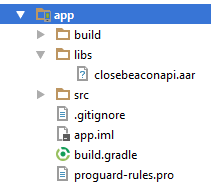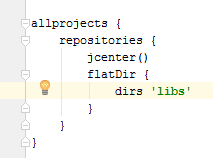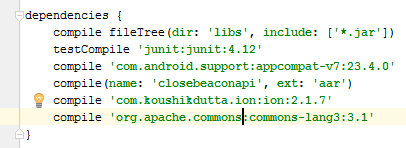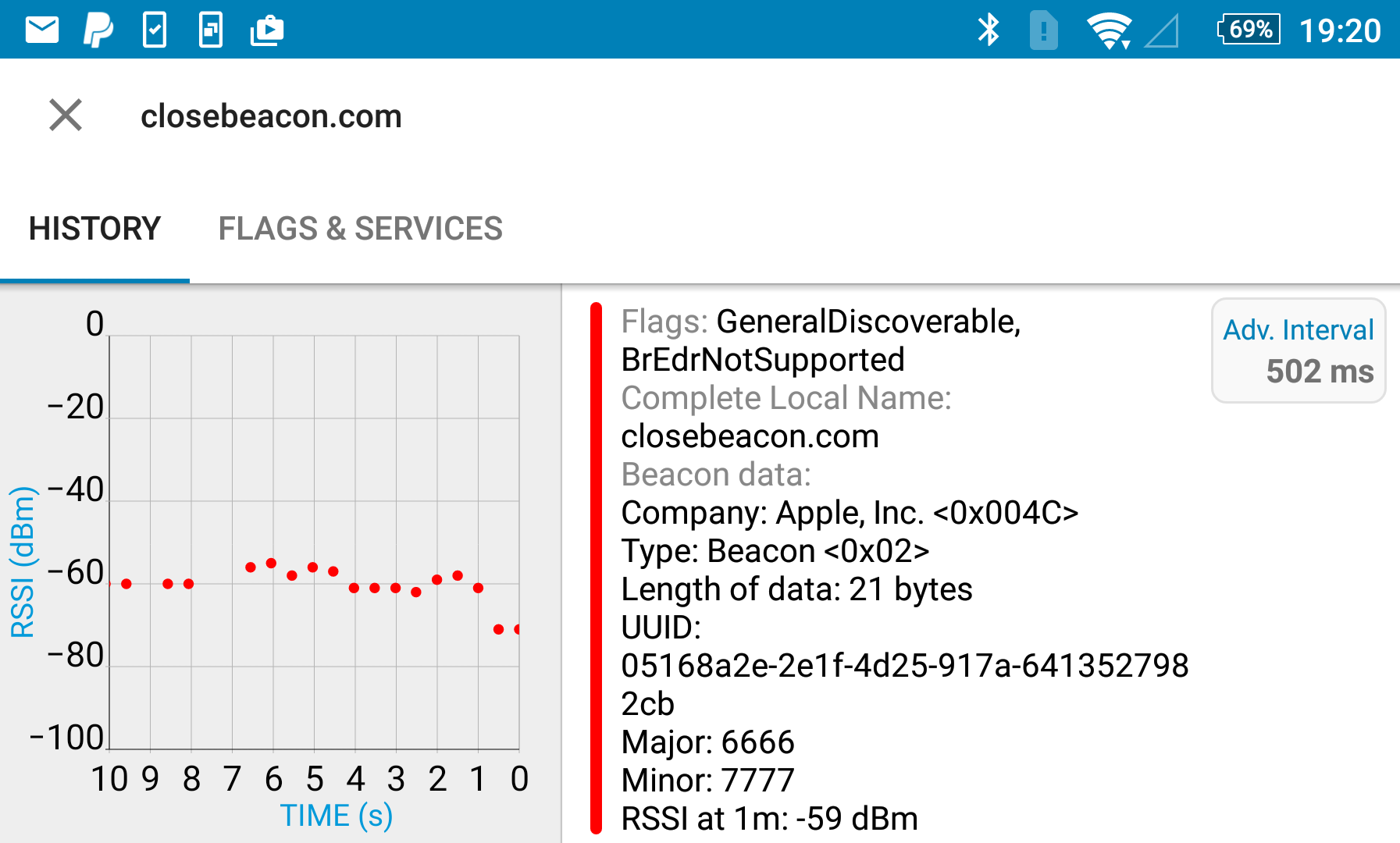Download CLOSE BEACON management APP for your smartphone to configured your beacons
with an unique proximity
UUID and major/minor values.
CLOSE Beacon Swift code snippets for iOS devices
Discovering non-activated CLOSE Beacons
Import required frameworks.
import UIKit
import CoreBluetooth
import Foundation
Define a UIViewController class implementing the CBCentralManagerDelegate and
CBPeripheralDelegate protocols.
class InactiveVC: UIViewController, CBCentralManagerDelegate, CBPeripheralDelegate ... {
var manager : CBCentralManager!
override func viewDidLoad() {
super.viewDidLoad()
manager = CBCentralManager(delegate: self, queue: nil)
...
}
...
}
Handle updates of the CBCentralManager state. Start scanning for CloseBeacon peripherals if/when
the CBCentralManager state indicates “PoweredOn”.
func centralManagerDidUpdateState(central: CBCentralManager) {
switch central.state {
case .Unknown:
print("BT state is unknown")
break;
case .Resetting:
print("BT is resetting")
break;
case .Unsupported:
print("BT is unsupported")
break;
case .Unauthorized:
print("BT is unauthorized in this app")
break
case .PoweredOff:
print("BT is powered off")
break;
case .PoweredOn:
print("BT is powered on")
manager.scanForPeripheralsWithServices(nil,
options: [CBCentralManagerScanOptionAllowDuplicatesKey : true])
break;
}
}
Handle discovered CLOSE Beacons.
func centralManager(central: CBCentralManager,
didDiscoverPeripheral peripheral: CBPeripheral,
advertisementData: [String : AnyObject],
RSSI: NSNumber) {
if peripheral.name != nil {
if peripheral.name == "closebeacon.com" {
for t in advertisementData {
if t.0 == "kCBAdvDataManufacturerData" {
let msd = NSData(data: t.1 as! NSData)
let m = UnsafePointer<UInt8>((msd.bytes))
let serNo = String(format: "%03d-%03d-%03d-%03d-%03d-%03d",
arguments: [m[6],m[5],m[4],m[3],m[2],m[1]])
print("Serial No: \(serNo)")
}
}
}
}
}
Discovering activated CLOSE Beacons
In order to find CLOSE Beacons that has been activated as iBeacon, you need to know at least the
proximity UUID that was used when the CloseBeacon was activated.
First import the required frameworks.
import UIKit
import CoreLocation
Define a UIViewController implementing the CLLocationManagerDelegate protocol.
class ActiveVC: UIViewController, CLLocationManagerDelegate ... {
var knownUuids : [NSUUID] = []
let manager = CLLocationManager()
override func viewDidLoad() {
super.viewDidLoad()
manager.delegate = self
if (CLLocationManager.authorizationStatus() != CLAuthorizationStatus.AuthorizedWhenInUse) {
manager.requestWhenInUseAuthorization()
}
...
}
...
}
Start ranging for CLOSE Beacons using known proximity UUIDs.
private func startRanging() {
for uuid in knownUuids {
print("Start ranging for uuid: \(uuid.UUIDString), fake id: \(uuid.hashValue)")
let r = CLBeaconRegion(proximityUUID: uuid, identifier: "\(uuid.hashValue)")
manager.startRangingBeaconsInRegion(r)
}
}
Handle found beacons.
func locationManager(manager: CLLocationManager,
didRangeBeacons beacons: [CLBeacon], inRegion region: CLBeaconRegion) {
for b in beacons {
let uuidString = b.proximityUUID.UUIDString
print("Proxy UUID: \(uuidString)")
print("Major: \(b.major), Minor: \(b.minor), RSSI: \(b.rssi) dBm")
...
}
}
CLOSE Beacon Android API documentation
Get started with the Close beacon platform, check out code
snippets
below.
.BUILDING

1: Directory structure

2: Global gradle file

3: Module level gradle file
Step 1: Drop provided "closebeaconapi.aar"-file into the libs folder in your
project
Step 2: Add provided "flatDir"-clause into the global level gradle file to tell
gradle to look in your local files aswell
flatDir {
dirs 'libs'
}
Step 3: Add required dependencies to the module level gradle file, the ones
required
are Ion, commons-lang, compile(name:'closebeaconapi', ext:'aar'), and maybe
appcompat, I'm
not sure.
compile 'com.android.support:appcompat-v7:23.4.0'
compile(name: 'closebeaconapi', ext: 'aar')
compile 'com.koushikdutta.ion:ion:2.1.7'
compile 'org.apache.commons:commons-lang3:3.1'
.CODE EXAMPLE
.BEWARE
Be aware of the fact that if you don't include these dependencies you will get some kind
of
Dex Dalvik ClassNotFoundException and NoClassDefFound.
Also the whole api will throw RuntimeException's left and right if you don't make sure
you have bluetooth enabled and it's reachable via the context. Also the minimum required
AndroidAPI
is 5.0 LOLLIPOP

.LICENSE
The MIT License (MIT)
Copyright (c) 2016 Smart Sensor Devices AB
Permission is hereby granted, free of charge, to any person obtaining a copy of
this software and associated documentation files (the "Software"), to deal in
the Software without restriction, including without limitation the rights to
use, copy, modify, merge, publish, distribute, sublicense, and/or sell copies of
the Software, and to permit persons to whom the Software is furnished to do so,
subject to the following conditions:
The above copyright notice and this permission notice shall be included in all
copies or substantial portions of the Software.
THE SOFTWARE IS PROVIDED "AS IS", WITHOUT WARRANTY OF ANY KIND, EXPRESS OR
IMPLIED, INCLUDING BUT NOT LIMITED TO THE WARRANTIES OF MERCHANTABILITY, FITNESS
FOR A PARTICULAR PURPOSE AND NONINFRINGEMENT. IN NO EVENT SHALL THE AUTHORS OR
COPYRIGHT HOLDERS BE LIABLE FOR ANY CLAIM, DAMAGES OR OTHER LIABILITY, WHETHER
IN AN ACTION OF CONTRACT, TORT OR OTHERWISE, ARISING FROM, OUT OF OR IN
CONNECTION WITH THE SOFTWARE OR THE USE OR OTHER DEALINGS IN THE SOFTWARE.




